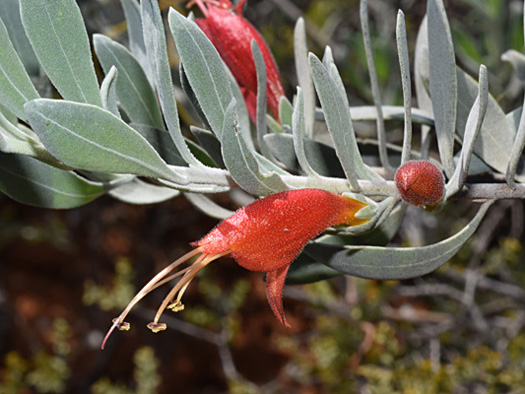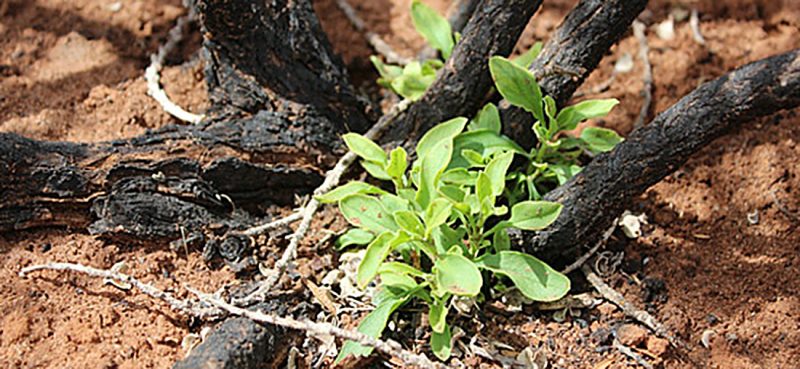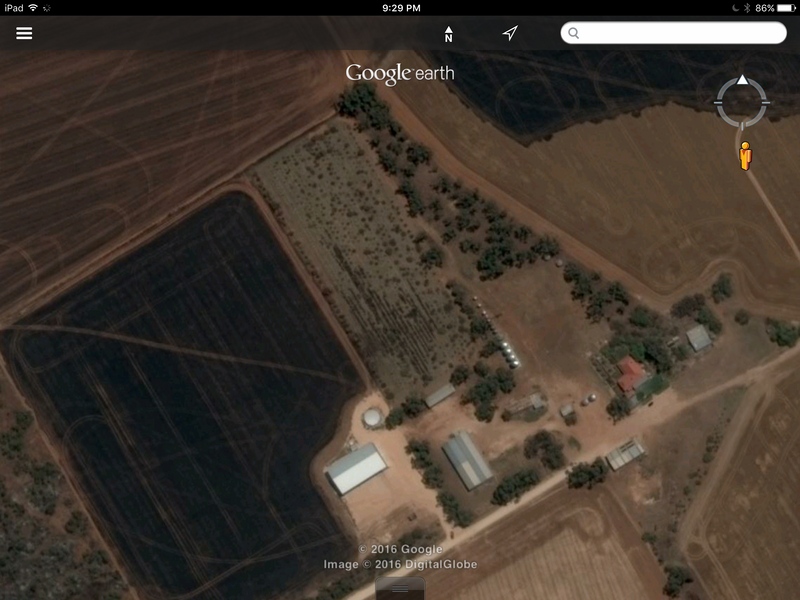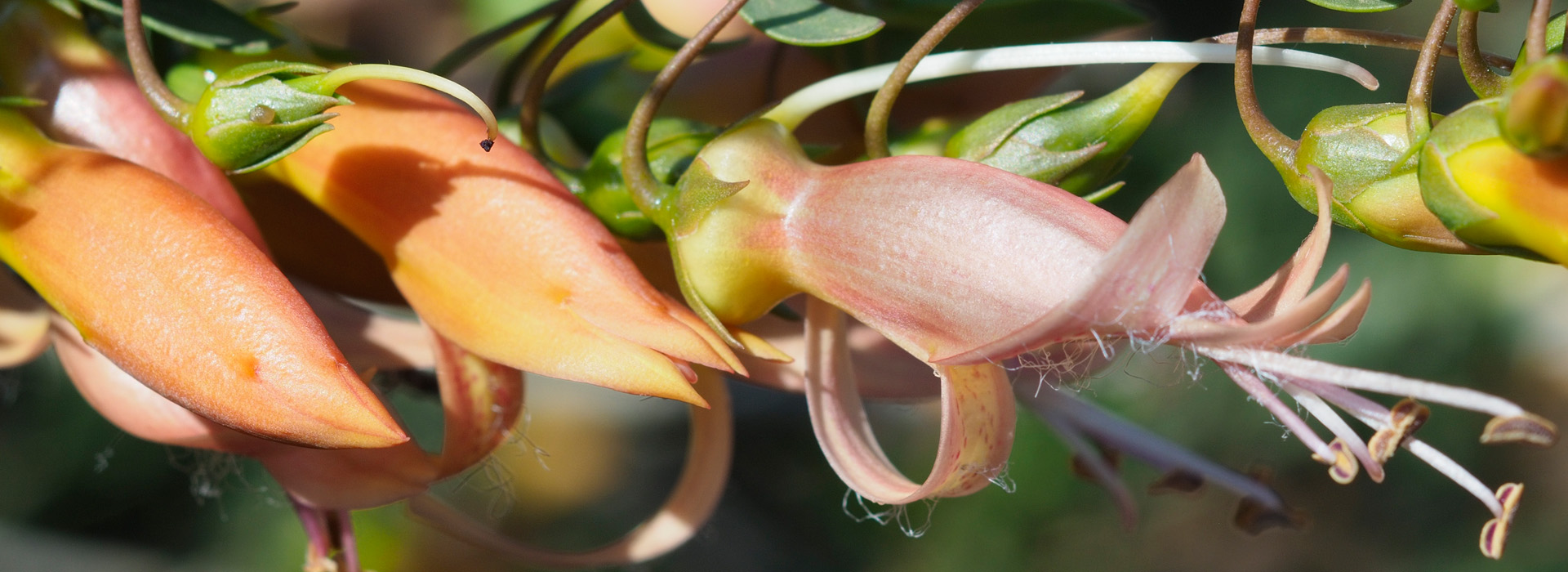Eremophila Research
To date, horticulturalists have been unable to grow Eremophila reliably from seed without recourse to expensive hormones or tissue culture. The Study Group and its research partner, the University of Queensland has three research grants to explore different aspects of Eremophila seed germination. The research aims to explore different aspects of germination with the broad aim of determining germination triggers and enabling plants to be grown reliably from seed for both revegetation and horticultural development purposes.

The projects funded to date are:
- Investigation of Seed Fill in Wild Eremophila, funded by the Simmons Bequest under the control of Native Plants Queensland with input from the University and the Study Group. This project was completed in 2023. Academic papers are in preparation.
- Applications-Oriented Elucidation of Germination Triggers for Emu Bush Seed. This project was funded by the Australian Research Council and includes input from the Study Group, Kersbrook Landcare, The University and the Australian Genome Research Facility. This program commenced in 2023 and will run to 2028. A PhD student commenced work on this project in 2024.
- Investigation of the Impact of Infraspecific Polyploidy on Germination Yields of Eremophila Species, funded by the Australian Flora Foundation with input from the University and the Study Group. This project commenced in 2023 and is due to be completed at the end of 2024.
More information about the progress of these projects can be found in post-2020 Newsletters.
A Study of Eremophila Seed Germination
In 1996, Study Group member Paul Rezl undertook a study into seed germination of 18 Eremophila species. The results of the study were published in the August 1996 newsletter of the Study Group.
Paul’s conclusions were:
- Seed extraction is the single most effective method of sowing Eremophila seed. Other methods mostly use fruits and not the seed for sowing and therefore are much less effective. Many fruits contain no viable seeds and these are eliminated by the extraction method.
- Several germination delay mechanisms other than the physical one (which, in all cases, is the impervious woody fruit) have been observed. These are the effect of temperature (oscillating temperatures promote germination) and the presence of inhibitor in the seed testa. These two mechanisms are not developed in all species and many germinate under the constant temperature. Most seeds will germinate without the removal of testa but in some cases as demonstrated on E.maculata this procedure is very helpful.
- Contrary to what has been previously published, fresh seeds germinate better than old.
- Treatment of seed, soil and seedlings with Polyversum has proved to be very beneficial. Root systems on the first repotting were well developed. Plants appear to be very compact with short internodes and many side shoots. Polyversum seems to stimulate the growth through the root tissue. I sincerely recommend it for testing with many other Australian native plants.
- Sowing of Eremophila seed as described above can be a good alternative to vegetative propagation and can be used for breeding new cultivars and propagation of the rare species.
The full report can be viewed in the Eremophila and Relatives section of the ANPSA website.
Eremophila Response to Fire
Ken Warnes, founder of our study group, lives in Owen, South Australia and has a farm about 6km from town. Up until November 2016 he had a large Eremophila plantation with over 300 specimens, and hybrids, which had flourished for many years. On 24 November 2015 a fast-moving grass fire started at Pinery, travelled south-east and then north-east towards Owen and Kapunda, affecting dozens of landholders. The fire burnt 84,000 hectares including parts of Ken’s property (but not the house).
Ken has been recording the impact of the fires on his Eremophila plantation, including what has happened since. Ken’s report, which included numerous photos, can be found in the June 2016 issue of the Study Group’s newsletter.

Basel shoots on Eremophila rotundifolia following fire
The effect of the fire on Ken’s collection, and its subsequent regeneration, are illustrated in the following image gallery.
Aerial View of Property Following the Fire

28 November 2015 (Immediately After Fire)
24 January 2016
5 February 2016
25 February 2016
9 April 2016
18 April 2016
 Australian Native Plants Society (Australia)
Australian Native Plants Society (Australia)